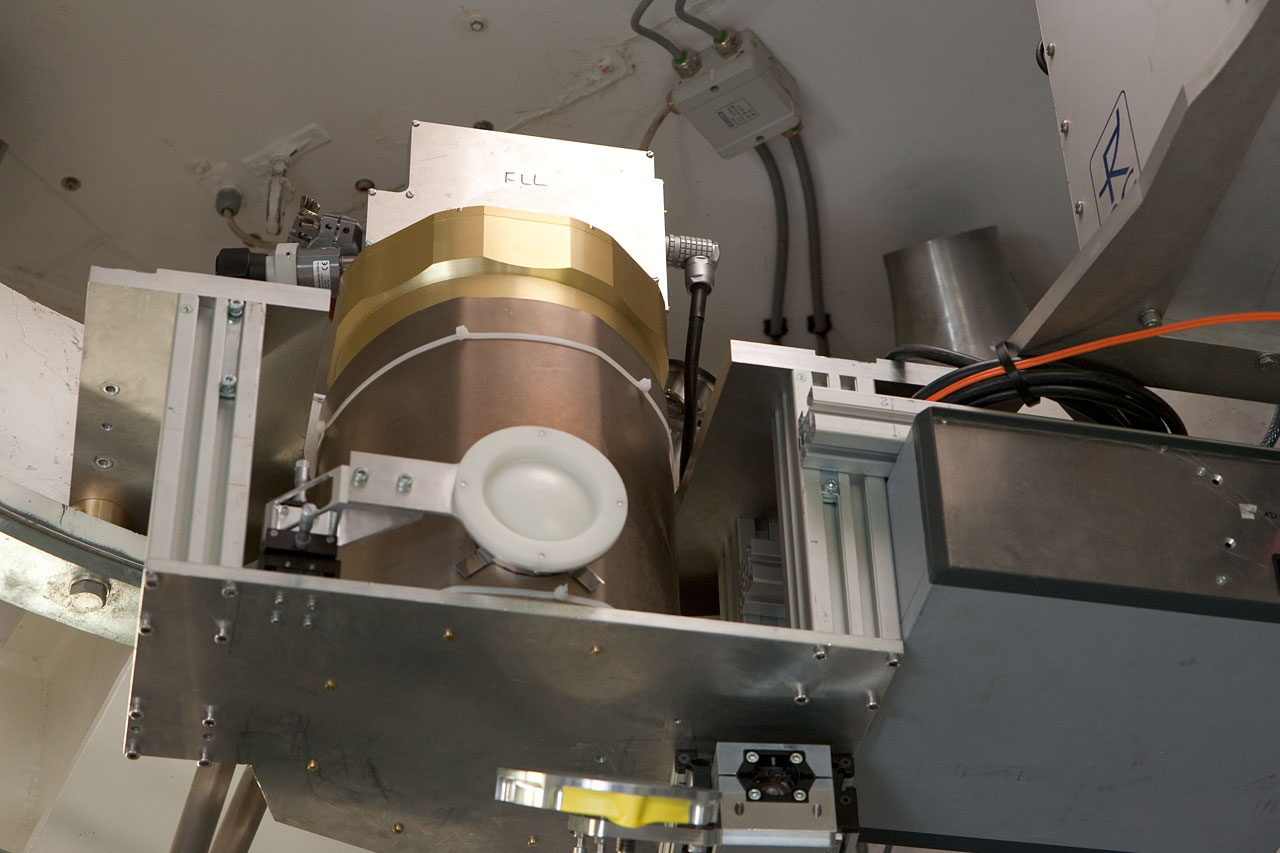SABOCA
Submillimetre APEX Bolometer Camera
The Submillimetre APEX Bolometer Camera (SABOCA) was a bolometric receiver installed on the Atacama Pathfinder Experiment telescope (APEX), located at an altitude of 5100 metres on Chile’s Chajnantor Plateau in the Atacama Desert. The pioneering APEX is the forerunner to the powerful Atacama Large Millimeter/Submillimeter Array, which operates at millimetre and submillimetre wavelengths of light. These wavelengths are key for observing the cold Universe, including gas, dust and other objects that are just a few degrees above absolute zero (-273.15° C).
SABOCA observed wavelengths of around 350µm (similar to ALMA Band 10) with 37 superconducting bolometers. Bolometers are highly sensitive instruments able to measure even that very small amount of energy received from cold astronomical sources in the sky. This sensitivity allows the instrument to measure the very low energy emissions of the cold Universe.
The receiver was built by the Max-Planck Institute for Radio Astronomy in collaboration with the Institute of Photonic Technology. SABOCA complemented the existing suite of submillimetre receivers available on APEX.
SABOCA was a versatile instrument that could observe a range of objects of great interest in the various different fields of today’s astrophysics: from our own Solar System to the debris discs around nearby young stars; from molecular clouds and star-forming regions in our Milky Way to cold dust in galaxies at various redshifts and evolutionary stages; all the way to the early epochs of the Universe, constraining the star formation rates in high-redshift starburst galaxies.
SABOCA was commissioned in 2009 and decommissioned in 2012.
Science Highlights
-
Astronomers obtain first image of a dusty disc closely encircling a massive baby star (eso1029)
-
APEX snaps first close-up of star factories in distant Universe (eso1012)
SABOCAThe authoritative technical specifications as offered for astronomical observations are available from the Science Operation page.
|
